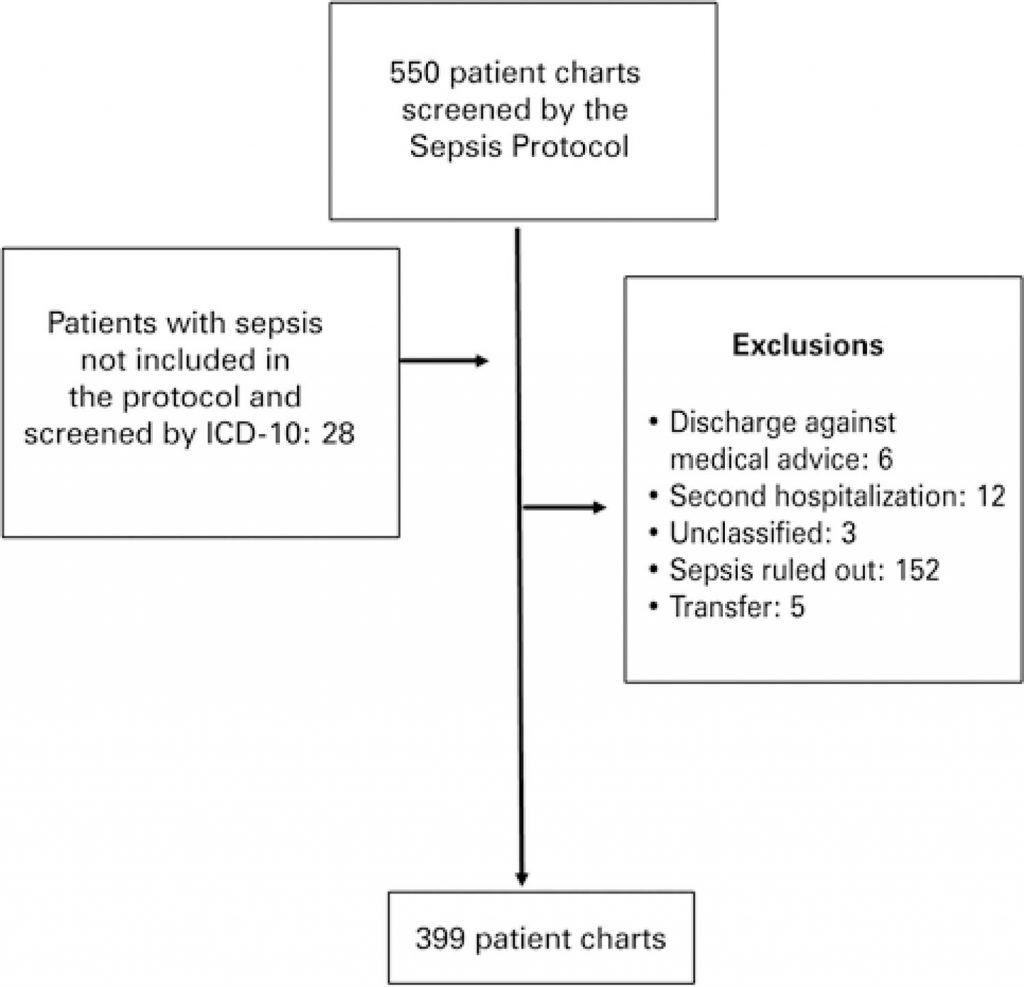einstein (São Paulo). 23/Feb/2022;20:eAO6131.
Epidemiology and treatment of sepsis at a public pediatric emergency department
DOI: 10.31744/einstein_journal/2022AO6131
ABSTRACT
Objective
To describe the clinical characteristics and treatment of children with sepsis, severe sepsis, and septic shock at a pediatric emergency department of a public hospital.
Methods
A retrospective, observational study. The medical records of patients included in the hospital Pediatric Sepsis Protocol and patients with discharge ICD-10 A41.9 (sepsis, unspecified), R57 (shock) and A39 (meningococcal meningitis) were evaluated.
Results
A total of 399 patients were included. The prevalence of sepsis, severe sepsis, and septic shock at the emergency room were 0.41%, 0.14% and 0.014%, respectively. The median age was 21.5 months for sepsis, 12 months for severe sepsis, and 20.5 months for septic shock. Sepsis, severe sepsis, and septic shock were more often associated with respiratory diseases. The Respiratory Syncytial Virus was the most common agent. The median time to antibiotic and fluid administration was 3 hours in patients with sepsis and severe sepsis. In patients with septic shock, the median times to administer antibiotics, fluid and vasoactive drugs were 2 hours, 2.5 hours and 6 hours, respectively. The median length of hospital stay for patients with sepsis, severe sepsis and septic shock were 3 days, 4 days and 1 day, respectively. The overall mortality was 2%.
Conclusion
Sepsis had a low prevalence. Early diagnosis and recognition are a challenge for the emergency care pediatrician, the first place of admission.
255

